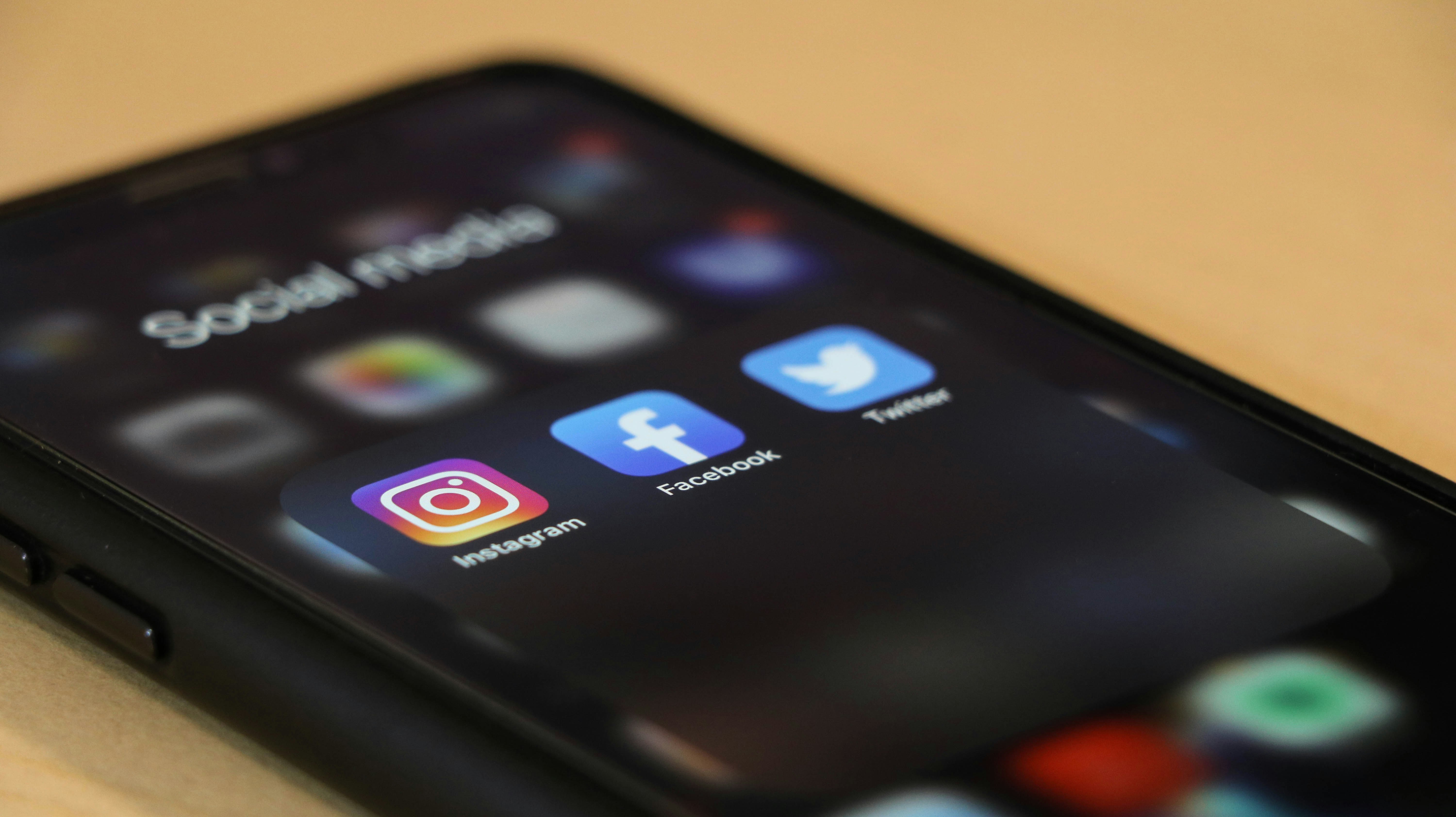There’s no single playbook for how social media apps make money. The biggest platforms run multi‑layered business models that combine advertising engines, subscriptions, in‑app purchases, social commerce, and even data services. Each revenue stream is tuned to how people actually use the app, scrolling feeds, watching short video, live streaming, shopping, or supporting creators. Below is a clear, up‑to‑date look at how the money really flows.
Advertising Engines

How Ad Auctions and Targeting Work
Advertising is the financial backbone of most social platforms. Ads are sold through real‑time bidding: every time a person opens the app, an algorithm runs a lightning‑fast auction that matches available ad slots with eligible campaigns and budgets. The winning ads are those most likely to drive performance at the lowest cost to the advertiser while protecting user experience.
Targeting is the other half. Platforms blend first‑party signals (on‑platform activity), contextual cues (content being viewed), and modeled audiences to predict who will act. AI now powers the bulk of this optimization. For example, Meta’s Advantage+ placements have been shown to lift click‑through rates by roughly 4% and conversions by about 3.8% versus standard setups, small edges that compound at scale. TikTok’s creative‑first ranking system often yields an average 2.4x return on ad spend for direct‑response campaigns because it prioritizes engaging, native video that converts.
The result: an ad marketplace where relevance and creative quality beat blunt targeting. When the system knows the outcome it should optimize for, clicks, add‑to‑carts, purchases, it can price impressions more efficiently and push budgets toward the best‑performing audience‑creative pairs in real time.
Ad Formats And Placements
Formats mirror how people consume content. Feed and Stories are the workhorses, Reels/Shorts power video discovery, and search/Explore capture intent. In 2025, global social ad spend is expected to reach roughly $219.8 billion, up from about $194.3 billion in 2024, evidence that marketers keep shifting budget to native social placements.
Creative nuances matter. Carousel posts on Instagram typically deliver around 1.92% engagement compared with 1.74% for single images, thanks to richer storytelling in a single unit. On Pinterest, shopping ads often post roughly 3x higher conversion rates and about 2x positive incremental ROAS relative to many other social environments because users browse with a shopping mindset.
Newer ad surfaces, shoppable video, click‑to‑message, and live shopping placements, shorten the path from awareness to checkout. The more an ad looks and behaves like content, the better it tends to perform.
Measurement, Brand Safety, And Ad Load
As auction prices climb, advertisers have seen CPMs rise by roughly 10.9% year over year, measurement and brand safety have become non‑negotiable. Platforms respond with incrementality tests, conversion lift studies, and clean‑room integrations that preserve privacy while proving ROI. Brand suitability tools, inventory filters, and pre‑bid exclusions keep ads away from risky content. And ad load, the percentage of feed occupied by ads, is carefully capped so users don’t churn. The balancing act is simple: maximize revenue without degrading the experience that keeps people coming back.
Subscriptions And Fan Monetization

User Premium Plans (Ad‑Free, Features, Verification)
Many platforms now sell premium tiers: fewer or no ads, priority customer support, enhanced analytics, and verification badges. X (formerly Twitter) offers paid verification plus revenue‑sharing for eligible creators. These products diversify revenue beyond ads, appeal to power users, and give platforms a buffer against ad market swings.
Creator Subscriptions, Tipping, And Gifting
Creators are their own small businesses, and platforms take a cut when fans pay them. YouTube channel memberships unlock exclusive perks: Super Chat and Super Thanks monetize live streams and comments. Instagram’s badges and live tipping let fans support creators in the moment. TikTok’s Creator Rewards Program (formerly the Creativity Beta) typically pays roughly $0.40–$1.00 per 1,000 qualified views depending on content and region. The platform keeps a platform fee or revenue share, turning fandom into a steady income line for both creators and the app.
In‑App Purchases And Virtual Goods
Live Streaming Economies And Virtual Currencies
Live video powers entire in‑app economies. Users buy virtual coins, send digital gifts, and climb supporter leaderboards during streams. Those micro‑transactions add up fast. Platforms retain a percentage of each transaction, and app store fees (often around 30% on iOS/Android) apply when purchases are made through mobile.
Boosts, Paid Visibility, And Pay‑To‑Promote
Casual users and small creators can “boost” posts to reach beyond their followers without opening a full ad account. These lightweight promotions, $5, $20, $100 at a time, are priced by reach or engagement and flow through the same auctions as traditional ads. It’s a gateway to advertising for individuals and small businesses, and a high‑margin revenue line for the platforms.
Commerce And Partnerships
Social Shopping, Checkout, And Affiliate Revenue
The line between content and commerce is thin now. Native product tags, in‑app checkout, and merchant catalogs make it possible to buy without leaving the app. Social commerce is on a path toward roughly $1 trillion in global revenue by 2028, propelled by frictionless checkout and shoppable video. Platforms can earn a sales commission, payment processing fees, or affiliate revenue when creators drive purchases.
Sponsored Content, Branded Content Tools, And Revenue Shares
Brands also pay creators directly for sponsored posts. To keep that money on‑platform, social apps provide branded content tools: disclosure toggles, paid partnership labels, contract workflows, and performance dashboards. Some platforms take a small transaction fee or offer revenue‑share placements that blend paid media with creator content, allowing advertisers to scale winning posts across ads while creators participate in the upside.
Data, APIs, And Compliance Realities
Analytics, Attribution, And API Access Fees
While the wild‑west era of selling raw data is over, data‑adjacent services remain a revenue lever. Platforms offer analytics suites, premium insights, and partner APIs for scheduling, listening, and attribution. Some charge usage‑based API fees or enterprise packages that include elevated rate limits, brand safety features, and advanced measurement integrations. For businesses, the value is clarity, where growth is coming from and which creative is doing the heavy lifting.
Privacy, Regulation, And Platform Risk
Evolving privacy laws and platform policies shape monetization. GDPR and CCPA require consent and data minimization: the EU’s DSA/DMA increase transparency and restrict self‑preferencing: Apple’s App Tracking Transparency limits cross‑app tracking, pushing platforms toward first‑party data and on‑device modeling. The net effect: more investment in privacy‑preserving tech, probabilistic measurement, and server‑side conversions. There’s also platform risk, algorithm changes, policy shifts, or enforcement sweeps can alter what’s monetizable overnight.
How Major Platforms Mix Revenue Streams
Meta (Facebook And Instagram)
Meta is the archetype of ad‑driven social. It generates well over a hundred billion dollars in annual ad revenue (recent figures land around $134B), fueled by unmatched reach and conversion‑optimized placements across Feed, Stories, and Reels. Advantage+ and AI creative optimization nudge ROAS higher at scale. Beyond ads, Meta earns from Shops, checkout fees, subscriptions for creators, and business messaging tools in WhatsApp, smaller lines that strengthen the flywheel.
YouTube
YouTube blends brand and performance advertising with the industry’s most mature creator monetization. Pre‑roll, mid‑roll, and Shorts ads deliver massive reach: creators share revenue from ads and YouTube Premium subscriptions. Memberships, Super Chat, and Super Thanks layer on top, while affiliate and shopping integrations turn videos into storefronts. It’s a diversified model where premium subscriptions help offset ad cyclicality.
TikTok
TikTok’s growth comes from high‑engagement short video and a creative‑led ad auction that often posts around 2.4x ROAS for strong direct‑response creative. Its revenue mix includes in‑feed and shopping ads, creator rewards, live gifting, and expanding social commerce. Estimates put TikTok’s annual ad revenue north of $18B, with commerce and live‑stream gifting as fast‑rising complements.
Snapchat And LinkedIn
Snapchat monetizes attention through AR lenses, Snap Ads, and Spotlight, with strong brand deals in entertainment and CPG and a growing SMB base via simplified ad tools. Virtual goods and AR sponsorships add niche revenue. LinkedIn is the B2B outlier: it combines premium subscriptions (Recruiter, Sales Navigator), job listings, and high‑intent ads in Feed and Search. Its data and professional context allow premium CPMs and stable, enterprise‑heavy revenue.
Conclusion
Social platforms make money by meeting people where they are, scrolling, watching, chatting, shopping, and charging brands or fans for access to that attention. Ads still dominate, but subscriptions, virtual goods, and commerce now provide real, growing lines of revenue. For marketers and creators, the play is the same: lean into native formats, measure incrementality, and let the algorithms do their work, while keeping a close eye on privacy shifts and platform policy changes that can move the goalposts overnight.
Key Takeaways
- Advertising via real-time auctions and AI targeting is the backbone of how social media apps make money, with creative relevance lifting ROAS (e.g., TikTok ~2.4x, Meta Advantage+ compounding gains).
- Native ad formats in Feeds, Stories, Reels/Shorts, and Explore capture attention at scale, with social ad spend rising to ~$219.8B in 2025 as shoppable and click-to-message units shorten the path to purchase.
- Subscriptions and fan monetization diversify how social media apps make money beyond ads, offering premium tiers, verification, and creator payouts (e.g., TikTok Creator Rewards ~$0.40–$1.00 per 1,000 qualified views).
- In-app purchases and live-stream gifting create high-margin microtransactions, while boosts let small creators and SMBs buy lightweight reach; mobile purchases often incur ~30% app store fees.
- Social commerce turns content into checkout with product tags and in-app payments, pushing toward ~$1T in global revenue by 2028 and enabling commissions, processing fees, and affiliate income.
- Measurement, brand safety, and privacy rules (ATT, GDPR/CCPA, DSA/DMA) drive investment in incrementality testing, clean rooms, and server-side conversions as CPMs climb ~10.9% YoY and policies can shift monetization overnight.
Frequently Asked Questions
What is the main way social media apps make money?
Advertising is the primary revenue engine for how social media apps make money. Real-time auctions fill ad slots as users scroll, with AI optimizing for outcomes like clicks or purchases. Native formats—Feed, Stories, Reels/Shorts—drive scale. Global social ad spend is projected around $219.8B in 2025, reflecting sustained marketer demand.
How do ad auctions and targeting work on social platforms?
Each app session triggers a real-time auction that matches ad inventory with eligible campaigns. Targeting blends first‑party signals, contextual cues, and modeled audiences. AI steers budgets to high‑performing audience‑creative pairs. For example, Meta’s Advantage+ can lift CTR ~4% and conversions ~3.8%, while TikTok often delivers ~2.4x ROAS for strong creative.
What non‑ad revenue streams do social media apps use?
Beyond ads, social platforms monetize through subscriptions (ad‑light tiers, verification), creator payments (memberships, tips, live gifting), in‑app purchases and virtual goods, social commerce with in‑app checkout and affiliate fees, and paid analytics/API access. Live‑stream coins face app‑store fees (often ~30%), while creator rewards and revenue shares diversify income.
How do platforms balance measurement, brand safety, and ad load?
With CPMs rising roughly 10.9% year over year, platforms offer incrementality tests, conversion lift, and privacy‑safe clean‑rooms to prove ROI. Brand suitability tools, inventory filters, and pre‑bid exclusions reduce risk. Ad load is capped to avoid churn—maximizing revenue without degrading the experience that keeps users engaged.
Which platforms make the most money, and why?
Meta and YouTube lead due to massive reach and mature ad systems; Meta’s ad revenue recently hovered around $134B. YouTube blends brand/performance ads with Premium subscriptions and creator monetization. TikTok is rapidly scaling via engaging short video, commerce, and live gifting. Mix, engagement, and advertiser trust drive revenue depth.
What’s the best way for a new social app to make money without heavy ads?
Early on, prioritize how social media apps make money through low‑friction, user‑aligned streams: premium subscriptions for power users, creator tipping/gifting, lightweight boosts for small accounts, and native commerce with checkout. Start with minimal ad load, prove engagement, then layer performance ads—using privacy‑preserving measurement from day one.
Related resources:
Social Media Advertising Agency
Facebook Ads / Meta Ads Management Services
The Importance Of Creating A LinkedIn Company Page
Source(s) cited:
Cheng, Marguerita. “How Meta Generates Revenue Through Ads and the Metaverse” 10 Oct. 2025, www.investopedia.com/ask/answers/120114/how-does-facebook-fb-make-money.asp. Accessed 28 Oct. 2025.
Huang, Celeste. “TikTok global ad revenue to reach $34.8bn in 2026.” WARC. Accessed October 28, 2025. https://www.warc.com/content/paywall/article/warc-curated-datapoints/tiktok-global-ad-revenue-to-reach-348bn-in-2026/en-gb/156878?.
S. Jackson, (2025). Meet Zhang Yiming, the extremely private billionaire behind TikTok who is now China’s richest person [Online]. Business Insider. Available at: https://www.businessinsider.com/tiktok-bytedance-founder-zhang-yiming-net-worth-2024-10 (Accessed: 28 October 2025).
M. Sheikh, 50+ Of The Most Important Social Media Marketing Statistics For 2023 [Online]. Sprout Social. Available at: https://sproutsocial.com/insights/social-media-statistics/ (Accessed: 28 October 2025).

Alessio Rigoli is the founder of AGR Technology and got his start working in the IT space originally in Education and then in the private sector helping businesses in various industries. Alessio maintains the blog and is interested in a number of different topics emerging and current such as Digital marketing, Software development, Cryptocurrency/Blockchain, Cyber security, Linux and more.
Alessio Rigoli, AGR Technology
![logo-new-23[1] logo-new-23[1]](https://agrtech.com.au/wp-content/uploads/elementor/thumbs/logo-new-231-qad2sqbr9f0wlvza81xod18hkirbk9apc0elfhpco4.png)
